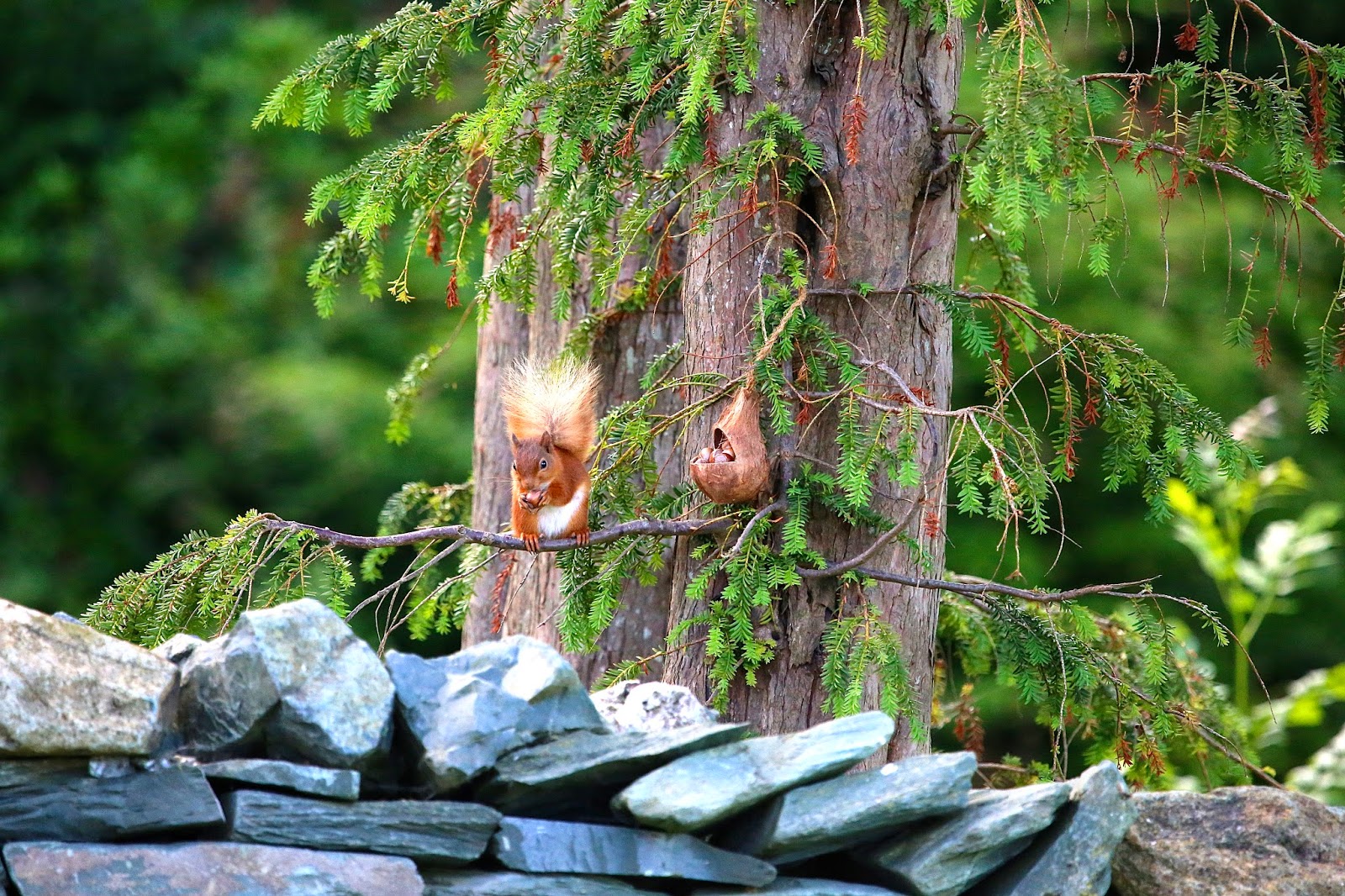A camouflaged Matthew chooses the wall where he can look straight onto the patio of Grange Apartment. Behind, Ben looks for a good vantage point.
We had read an article in The Westmorland Gazette which stated that red squirrels were having a ball at a Lake District holiday park since aniseed was introduced to their feeding mix.
Matthew and Ben thought that this theory could be worth testing out with our Underscar Red Squirrel colony. Grange patio was set up with two feeding stations. The feeding station with the hazelnuts inside the log was treated with aniseed. The feeding station with the hazelnuts inside the coconut shape was left untreated with aniseed.
We were able to find all our materials to set this up from the woodland walk.
Matthew uses the aniseed spray to treat the top and inside of the log.
Our first visitor ( A Dunnock) seems interested in the hazelnuts.
We then get into a vantage point where we think we can sit and wait and observe for some length of time.
You can just make out that Matthew has some camouflage face paints to help break up his outline.
Ben is ready to get that photo using a camouflage sheet to part cover up.
This red squirrel prefers its hazelnut treated with aniseed as it comes back to the feeder many times.
We notice the red flash going through its tail.
The red squirrel is so keen to get its hazelnut from the treated feeder that it sneaks right inside.
On looking back through our record of red squirrel photos we see that we had captured a photo of this red squirrel when it was just a kit (baby red squirrel).
This red squirrel was a baby last year.It has fended and foraged for itself well to make it into its second year.
We decided that the aniseed worked well in the feeder. During the testing out of this we experienced wet weather. Most of the text book information on red squirrels states that they are less active on cold,wet or windy days. The Underscar squirrels disprove this often visiting during heavy downpours.
Using its tail as an umbrella.This time it is taking a hazelnut from the other end of the log.
On speaking with Ben and Matthew we thought it would be a good idea to place a cuddly red squirrel in the reception area.
Here he is. Meet Oxley - our cuddly little red squirrel friend.You can take him out with you on your adventures, then write in the book and tell us about your day.
Matthew took him out on an adventure with all his family. His grandma managed to find another Oxley while they were out; so Matthew can now go home with his own Oxley.
Looking back over our red squirrel photos, I chose one which I thought looks like Oxley.
Thank you, Ben and Matthew, for your help again.












































